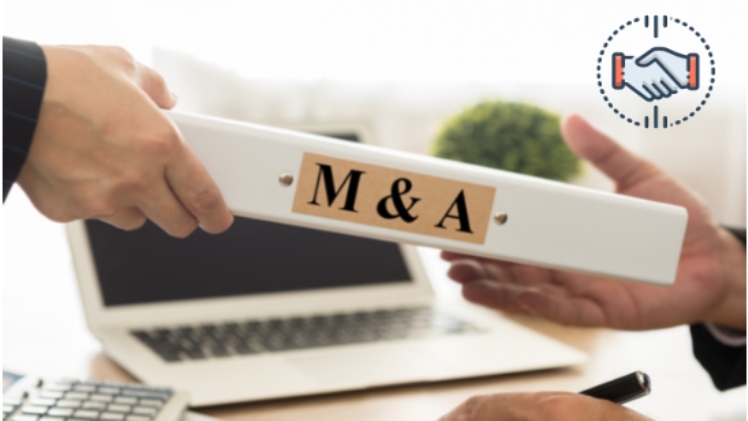Mergers and acquisitions (M&A) are a common occurrence in today’s business world. Though their frequency might make them seem commonplace, the decision to merge or acquire is not one that companies take lightly.
These transactions can be beneficial for shareholders if done correctly, whether it is a personal holding company or not. The key is for the company to have a strategic plan for M&A that will create value for shareholders. In this article, we will explore how mergers and acquisitions benefit shareholders.
How Mergers and Acquisitions Works
In business, the term “mergers and acquisitions” (M&A) refers to the consolidation of companies or assets through various types of financial transactions.
M&A can take many forms, but the most common type is the purchase of one company by another (known as an “acquisition”). In an acquisition, the buyer usually pays for the target company using a combination of cash and debt.
Another common type of M&A is a merger, which is when two companies combine to form a new entity. In a merger, the two companies’ shareholdings are combined into a single entity.
There are many reasons why companies engage in M&A activity. The most common reason is to grow their business by acquiring new customers, products, or technology.
What Things to Need When Two Company Are Merged
When two companies are merged, there are a few key things that need to happen in order for the transition to be smooth. The first thing that needs to be done is to update the company registration.
This includes updating the address, contact information, and any other pertinent information. If your new company is in Malta, then you need to go through company registration malta to create a new entity. Actually, any company that forms needs to do company registration, whether you set up a company in Malta or other places.
Second, both companies need to agree on a common vision and goal for the merger. Without this, it will be difficult to make decisions about how to move forward. Third, both companies need to decide which aspects of their business model will remain separate and which will be combined. This can be a difficult decision, but it’s important to make sure that both companies are comfortable with the changes.
Lastly, both companies need to communicate clearly with their employees about the merger and what it means for them. Employees will likely have questions and concerns, so it’s important to address these as soon as possible. By taking care of these key things, companies can set themselves up for a successful merger.

How Shareholders Are Benefited by Mergers and Acquisitions
Shareholders are the owners of a company and are usually the ones who benefit the most from a merger or acquisition. There are many reasons why companies decide to merge or acquire other companies, but the main reason is usually to increase market share, reduce costs, or gain new technology. Here are some of the benefits shareholders receive when companies are merged or acquired.
1. Economies of Scale
Shareholders are the owners of a company and are typically rewarded for their investment through dividends and an increase in the value of their shares. A merger or acquisition can be beneficial to shareholders by providing economies of scale, which can lead to increased profits and shareholder value.
Economies of scale occur when a company grows larger and is able to produce goods or services at a lower cost per unit. This can be achieved through the use of better technology, more efficient processes, or greater buying power. As a result, shareholders may see an increase in dividend payments or the value of their shares.
In addition, economies of scale can help a company to expand into new markets or product lines, which can lead to even more growth and profitability. This can provide shareholders with even more benefits in the form of increased dividends and share prices.
2. Higher Levels of Competition
When two companies merge, they often have complementary businesses that can help each other grow. For example, one company might have a great product but poor marketing, while the other might have strong marketing but a weak product. By joining forces, they can create a stronger overall company that is better able to compete in the marketplace.
Shareholders also benefit from increased competition. When two companies merge, they often become more efficient and innovative, leading to higher levels of competition in their industry. This can result in lower prices for consumers and higher profits for shareholders.
3. Increased Market Share
A merger is defined as the absorption of one company by another. There are different types of mergers, but the main goal of any merger is to increase market share. In most cases, shareholders are the biggest beneficiaries of a merger or acquisition.
Shareholders benefit from increased market share in several ways. First, a larger market share usually leads to increased profits. A company with a larger market share can charge higher prices and enjoy economies of scale that lead to lower costs. In addition, a company with a larger market share is often better able to weather economic downturns than its smaller rivals.
Second, increased market share often leads to increased shareholder value. A company with a larger market share is typically worth more than a similar company with a smaller market share. This is because investors are willing to pay more for shares in a company that dominates its industry.
4. Diversification of Risk
There are many benefits for shareholders when companies engage in mergers and acquisitions, including diversification of risk.
When two companies merge, the shareholders of both companies receive new shares in the combined company. This can provide them with a more diversified investment portfolio and help spread out their risk.
5. Synergies
In business, the term “synergy” is used to describe the increased value that two companies create when they merge. This added value can be in the form of cost savings, revenue growth, or both. For shareholders, synergies are an important reason to support a merger or acquisition.
When two companies merge, they often have the opportunity to eliminate duplicate costs. For example, if both companies have their own marketing departments, they can save money by eliminating one of those departments and using the remaining one to serve both companies. Cost savings like this directly benefit shareholders by increasing profits and/or allowing the company to reinvest those savings in other areas.
In addition to cost savings, shareholders also benefit from revenue growth that can result from a merger or acquisition.
Conclusio
It is evident that mergers and acquisitions can be highly beneficial to shareholders. They can result in increased market share, economies of scale, and improved shareholder value. Additionally, they can provide a company with the opportunity to enter new markets and expand its product offerings. While there are risks associated with any business transaction, when done correctly, a merger or acquisition can be a win-win for all parties involved.

